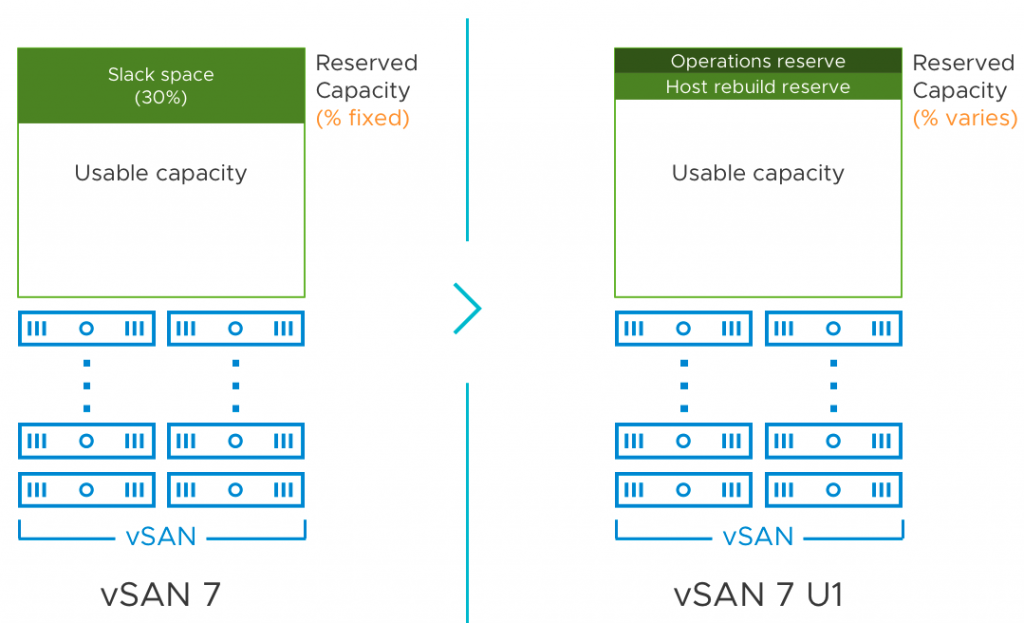Upgrade Economics
Patching and upgrading in a data center is something that is sometimes viewed purely as a “cost” based on the manpower required to upgrade an environment. While VMware has a lot of great options to reduce this (VMware Cloud Foundation, VMware Cloud, vSphere Lifecycle Manager), it is worth noting that by upgrading you can reduce costs for your vSAN environment.
Same Performance, Lower Capital Costs
A benefit of VMware vSAN is you can scale performance by either adding more disk groups to a host, or hosts to a cluster. In addition to this, software updates can unlock more performance that may help avoid the need to purchase additional hardware to meet new performance demands. VMware estimates customers may see up to 30% improvement in performance when comparing vSAN 7 U1 to vSAN 6.7 U3. As Pete’s Blog explains, these improvements come from multiple areas of optimization of the storage, networking, and CPU usage. New vSAN versions bring performance improvements in many shapes and forms with vSAN. New hardware support has come with updates, that allow for increased performance. vSAN Compression-Only allows for space efficiency even on demanding workloads as the write-optimized IO path delivers higher consistent write throughput.

Lower Operational costs
Patching itself can be an expensive operation for some organizations. Many customers roll out monthly or quarterly patching for security and compliance requirements. If this patching requires manual intervention, or long periods of operational staff be “eyes on glass” this can increase labor costs significantly. Upgrading vSAN can help drive down these costs in several ways.
- Improved patching automation. vLCM can handle the tedious tasks of staging firmware and BIOS patches that are required alongside many ESXi driver updates. No more manually uploading ISOs to out of band interfaces, or having to manually reboot a host 4 times to deliver a “full stack update”.
- Faster host restarts. Faster host resynchronization speed up common operational tasks. vSAN uses an in-memory metadata table to track blocks of data as they are being committed to the caching tier.
- Durable writes during maintenance mode events. While the intention of this enhancement focuses on improving the durability of changed data while a host is in maintenance mode, it offers the potential to dramatically reduce the amount of data needed to be resynchronized after the host exits out of maintenance mode. This feature’s improved performance consistently, as well as lowered risk, will lend to less time needed, and remove for many any need to do slow full host evacuations.
Lower Capacity Costs
vSAN 7 Update 1 allows for significant capacity overhead reductions. Prior to this update, a 25-30% slack space was required for rebuild and resynchronization overhead. The new overheads can be (especially for larger clusters) much much lower. A 48 Node cluster would less than 1/2 this for its slack space. This reduced overhead means a net lower cost per GB for storage. In addition, the new overheads can be reserved, reducing the need for operational monitoring to make sure the slack space is not inadvertently used up causing an out of space condition. This capital and operational savings can be enabled by simply updating your VSAN cluster, and clicking twice to enable Operations Reserve and Host Rebuild Reserve.

vSAN 7 Update 1 delivers incredible savings by delivering more capacity and performance at the same capital cost while lowering the operational costs to operate the cluster. Rather than look at an upgrade as an expense, ask if you can afford to not upgrade?




